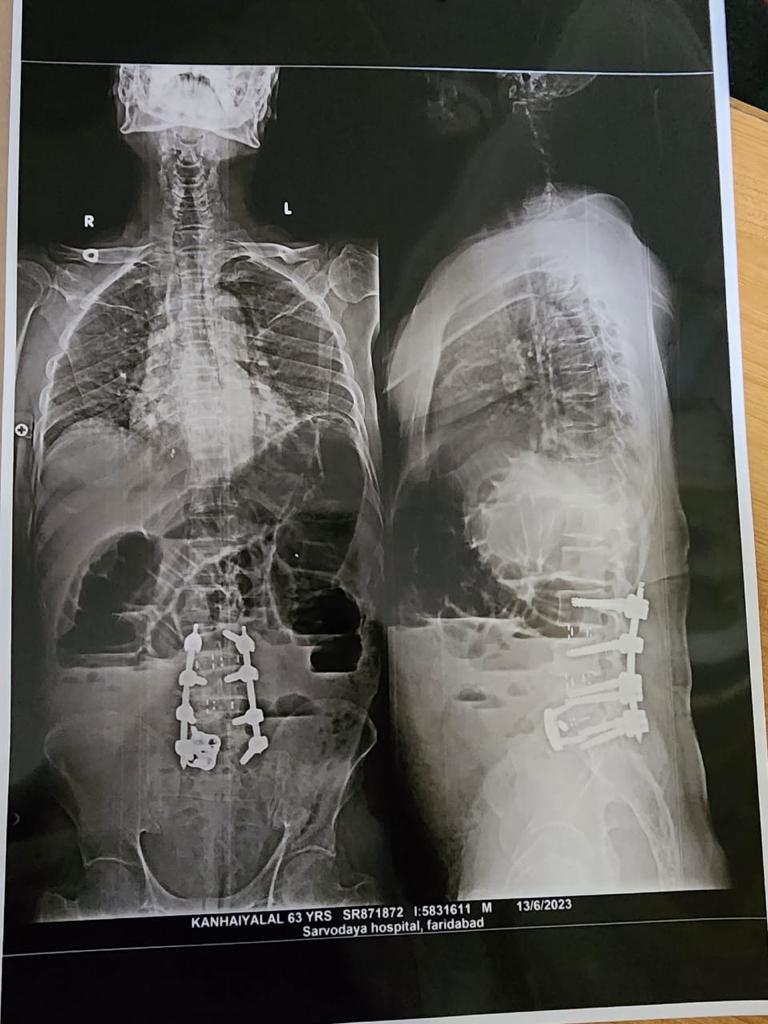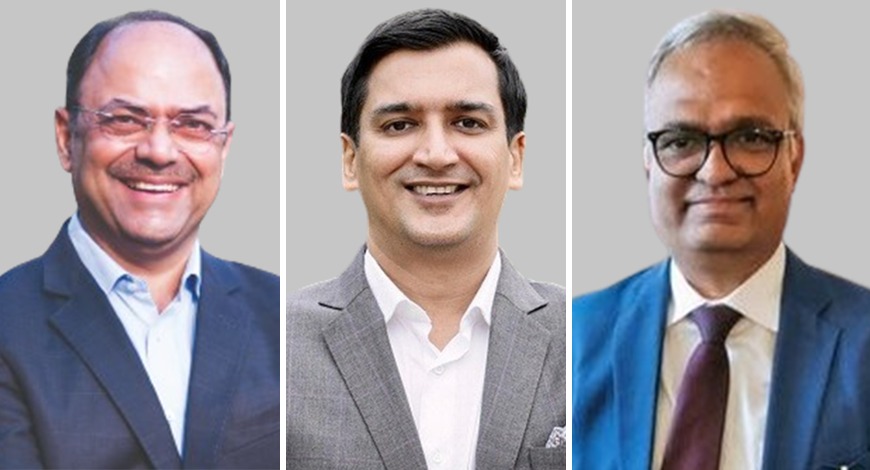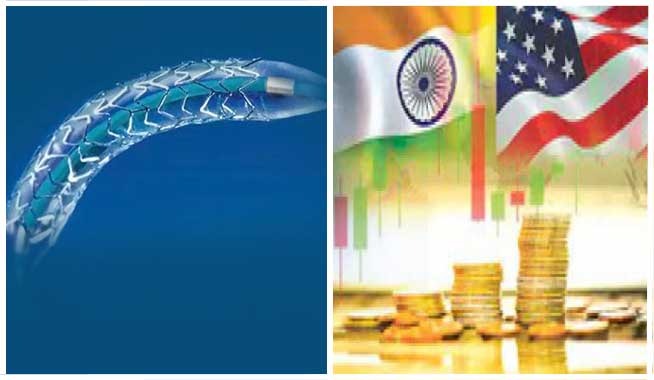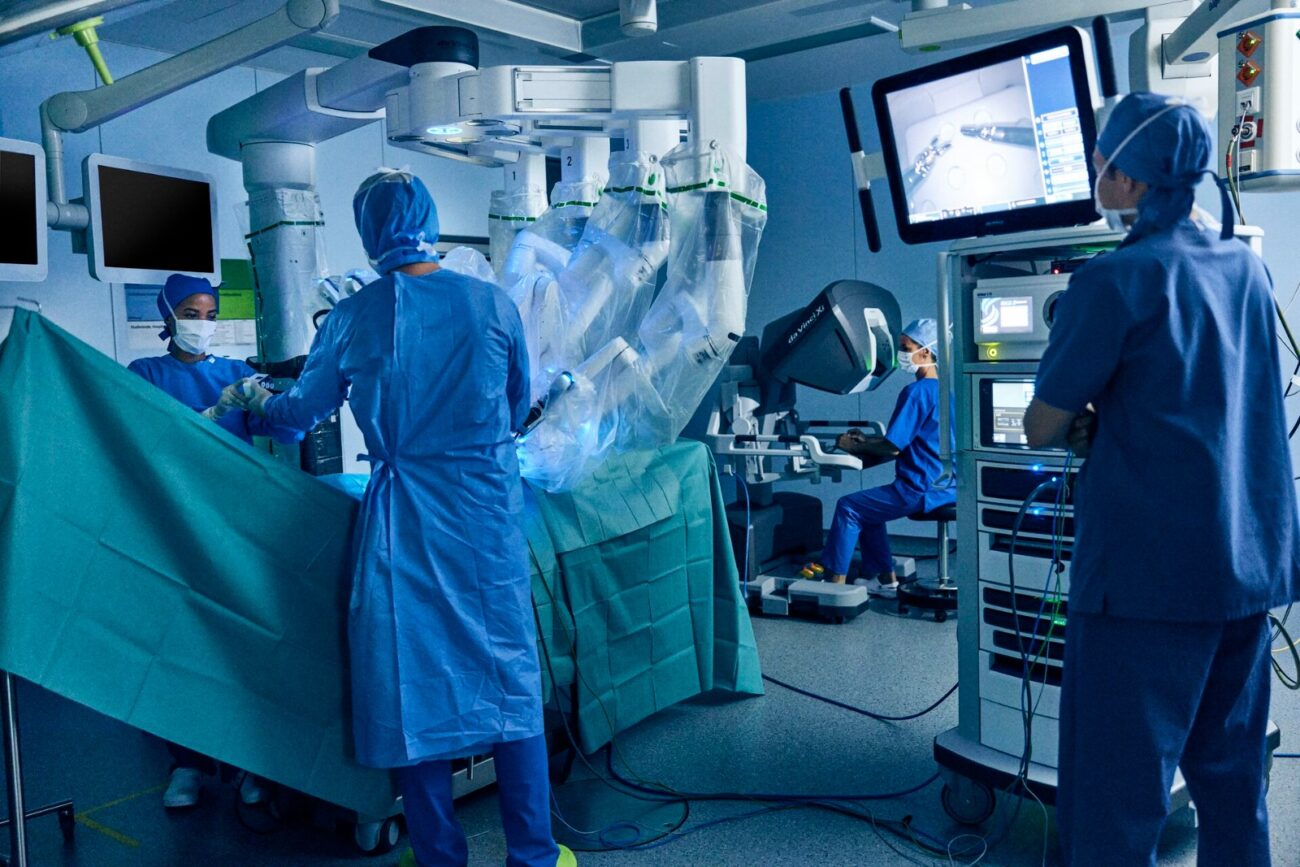Keyhole Spine Surgery Cures 63-year-old Patient of Sciatica Pain
Surgeons at Sarvodaya Hospital, Sector-8, Faridabad, have conducted North India’s first surgical procedure called Oblique Lumbar Interbody Fusion at L5S1 (OLIF51) to cure the elderly man of age-related spinal curvature and narrowing of spinal canal Since

Surgeons at Sarvodaya Hospital, Sector-8, Faridabad, have conducted North India’s first surgical procedure called Oblique Lumbar Interbody Fusion at L5S1 (OLIF51) to cure the elderly man of age-related spinal curvature and narrowing of spinal canal
Since the last two years, Kanhaiya Lal, a 63-year-old man from the Sagar district in Madhya Pradesh, was suffering from pain in the lower back, weakness in legs, difficulty walking, and sciatica pain that radiated from his lower back into the buttocks, thighs, and calves. He had tried medicines but to no avail. When he couldn’t take the pain any longer, he was brought to Sarvodaya Hospital, Sector-8, Faridabad.
Upon admission, the doctors diagnosed him with two age-related conditions of the spine: degenerative scoliosis and lumbar canal stenosis. In the former, the patient starts to develop a sideways curvature of the spine due to wear and tear of spinal structures with age. It affects the lower back (lumbar spine) and is found in 2-5% of people above 60 years of age.
Degenerative scoliosis is often associated with other age-related spinal conditions like spinal stenosis in which the spinal canal becomes narrow in the lower back (lumbar) region. This puts pressure on the spinal cord and nerves, leading to symptoms that Kanhaiya Lal was suffering from. If untreated, he would have become bedridden with permanent weakness in his legs.
At Sarvodaya Hospital, Kanhaiya Lal successfully underwent a complex surgical procedure called Oblique Lumbar Interbody Fusion at L5S1 (OLIF51). This minimally invasive spinal surgery, which took seven hours, alleviated his pain and stabilized the spine. This is North India’s first OLIF surgery at the L5-S1 level with the patient lying in a lateral position.
The surgery was conducted in two stages by two teams of surgeons headed by Dr. Ashish Tomar, Senior Consultant – Orthopedics & Spine Surgery, and Dr. Ved Prakash, Sr. Consultant – Cardiothoracic & Vascular Surgery, Sarvodaya Hospital, Sector-8, Faridabad.
In the first stage, a three-level OLIF procedure on vertebra L3 to S1 was conducted with the patient lying in the lateral position. The second stage involved placing pedicle screws above and below the vertebrae that were fused to add extra support and strength to the fusion. A rod was used to connect the screws to prevent movement and allow the bone graft to heal.
Said Dr. Ashish Tomar: “During the OLIF51 procedure, we made a small incision in the patient’s side on the left. This allowed access to the space between the L5 and S1 vertebrae in the lower back. Using specialized instruments and imaging guidance, we removed the damaged disc material and bone. Then we placed a cage filled with bone morphogenetic protein (BMP) into the empty disc space to help promote the joining of the L5 and S1 vertebrae. The cage would provide stability and BMP would help in new bone formation over time. The surgery required special retractor systems and top-notch surgical skills as it was conducted between the bifurcation of great vessels and other delicate structures.”
Added Dr. Ved Prakash: “The OLIF51 procedure offers several benefits compared to the traditional posterior, open surgery of the spine. It is a minimally invasive technique that requires smaller incisions, ensuring less pain, reduced blood loss, faster recovery, and no post-surgery back pain. This approach also avoids disturbing the back muscles, ligaments, and nerves at the back of the spine, leading to better restoration of the spine balance. The patient benefitted from indirect decompression of the spinal nerves without directly cutting the bone, as the surgery was done outside the spinal canal.”
The procedure was successful. The patient’s motor power started recovering and he began to walk without any pain from the very next day. He was discharged from the hospital three days later. Added Dr. Ashish Tomar: “The patient needs to avoid lifting weights, bending forward or doing floor-level activities for the next three months. After that, there are no restrictions on his physical movements, and he can go on to lead a normal life.”
About Sarvodaya Hospital, Sector 8, Faridabad
Sarvodaya Hospital is spread across 4.25 acres with 500 beds, including 109 ICU beds and 9 OTs. The hospital has set benchmarks in super-specialty care with its path-breaking work over the past 30 years. Today, it is recognized as one of the top healthcare destinations in NCR providing super-specialty services in Cancer Care & Bone Marrow Transplant, Nuclear Medicine and PET-CT, Radiation Oncology, Surgical Oncology, Orthopedics & Robotic Joint Replacement, Neurosciences, Cardiology, Cardio-Thoracic & Vascular Surgery, Pediatric Cardiac Surgery, Minimally Invasive Surgery, Urology, Dialysis & Kidney Transplant, ENT & Cochlear Implant, Asthma & Lungs, and Gastroenterology & GI Surgery.






